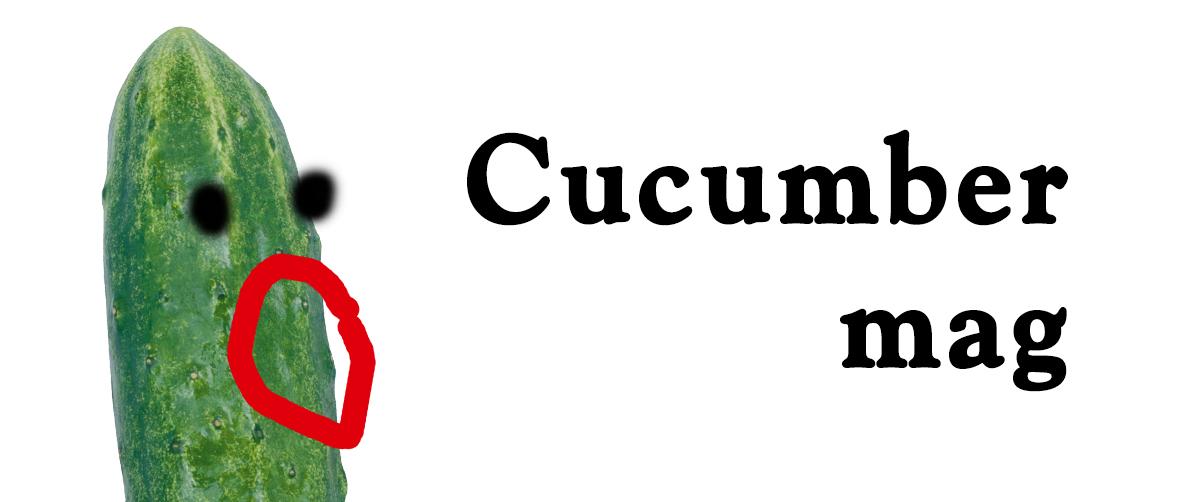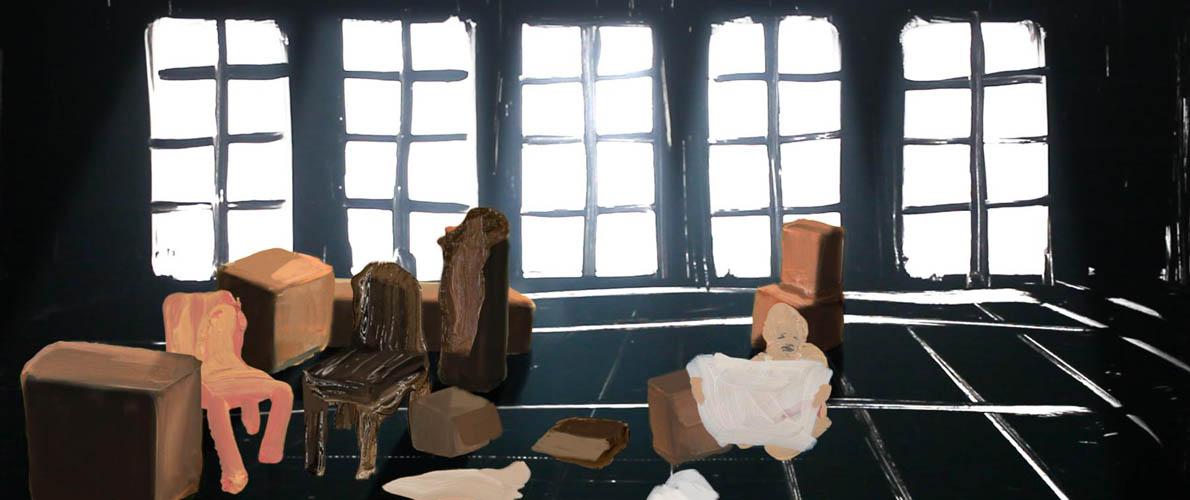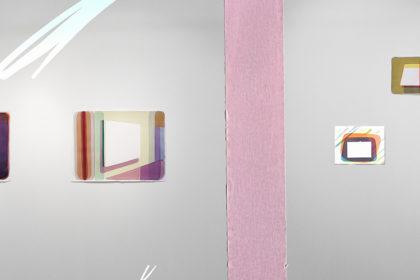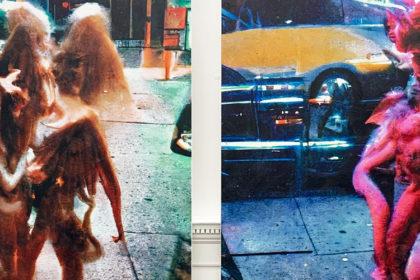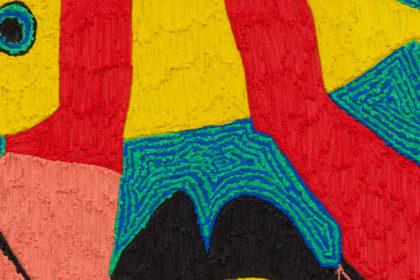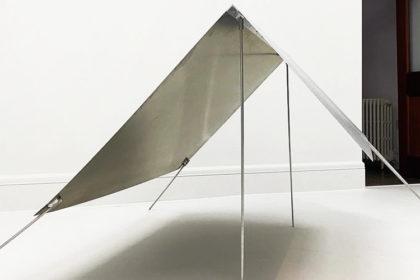Tala Madani’s paintings, drawings, and stop-motion animations construct grotesque worlds and fantastical scenes in which the boneheadedness of men reaches a fever pitch. Madani tends to depict her male protagonists as disemboweled, humiliated, and pathetic entities, quickly rendered figures that leak fluids, engage in curious homosocial rites of passage, and inflict intolerable pain upon one another.
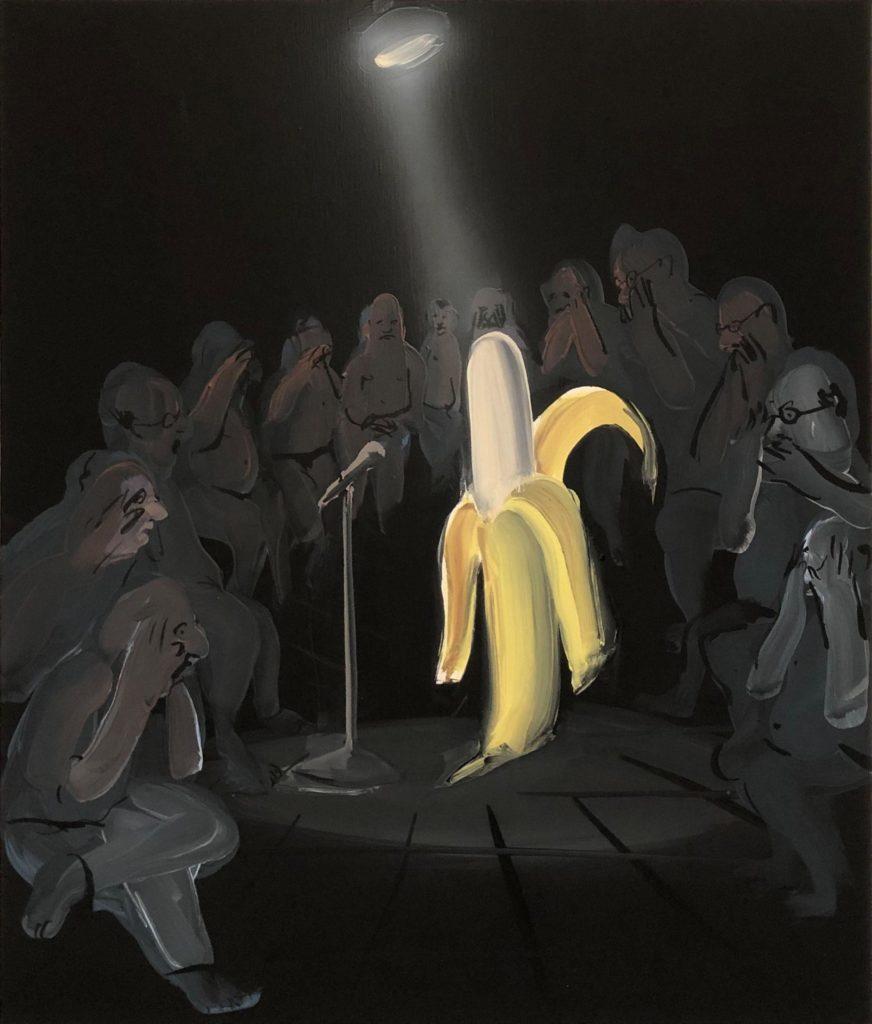
A Banana is Speaking, oil on linen, 51.1×43.5 cm, 2017
The blunt inelegance of Madani’s irredeemable men merge with a style of painting reminiscent of art-historical legacy figures such as Morris Louis and Helen Frankenthaler, turning tropes of abstraction into bodily fluids that leave their mark on the canvas and heighten their grotesque humor. Madani’s stop-motion animations are similar in style and execution. Each minute of video consists of close to 2,500 still images quickly painted sequentially on a single piece of wood for a camera to record frame by frame. In sequence, the images begin a smeary movement across a plane, representing an imagined world that is insufferably soiled and replete with the markings of the ridiculous, however much it might resemble our real world.
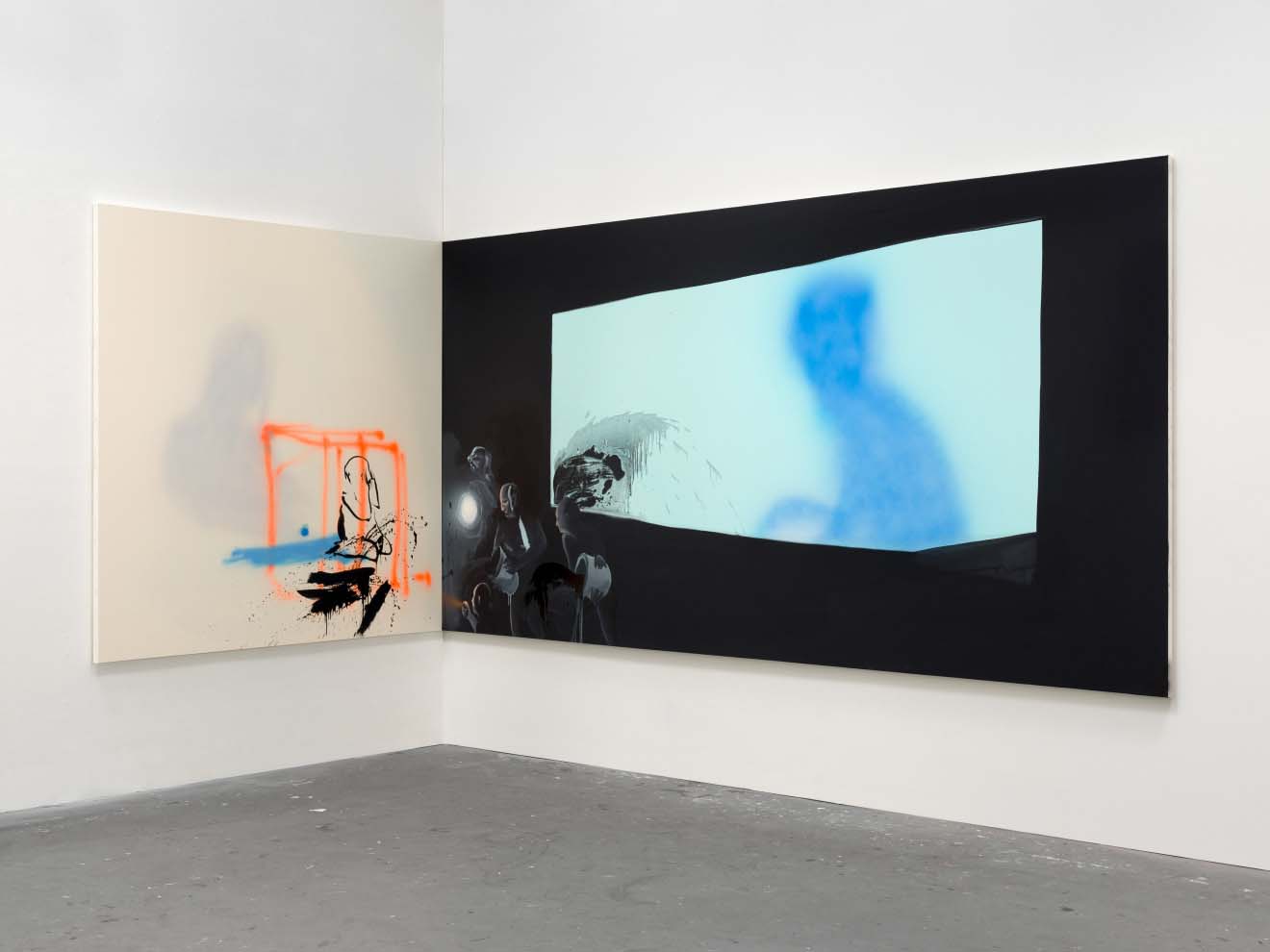
Graffiti Hand, 2021 oil on linen, diptych: left panel 182.9 x 182.9 cm, right panel 182.9 x 365.8 cm
Sadly we’ve taken the audience’s confidence in approaching artworks by institutionalizing art. I would want the audiences to be more selfish when they’re looking at artworks in that they should experience them for themselves and see if they have an aesthetic, psychological, intellectual, and cultural pull on an individual level. Distancing the artwork from the viewer by inserting the identity of the maker in the middle of it is very anti-art. When I look at an artwork, I’m purely interested in what it does for me, and I wish people did that more often. What does it do for you? And if it doesn’t do anything, then be honest about that. We’re looking at artworks as if they’re in history books, and that’s a history book experience, but that shouldn’t be the art-object experience. The artwork is hoping to have a connection with someone’s eyes on a completely different level, and maybe it’s because we’ve experienced art so often in history books that when we approach the actual object we continue that approach as opposed to allowing space for an experience. That’s what I mean about putting aside the artist and having a direct experience if one wants to, if one can, if one’s ready.
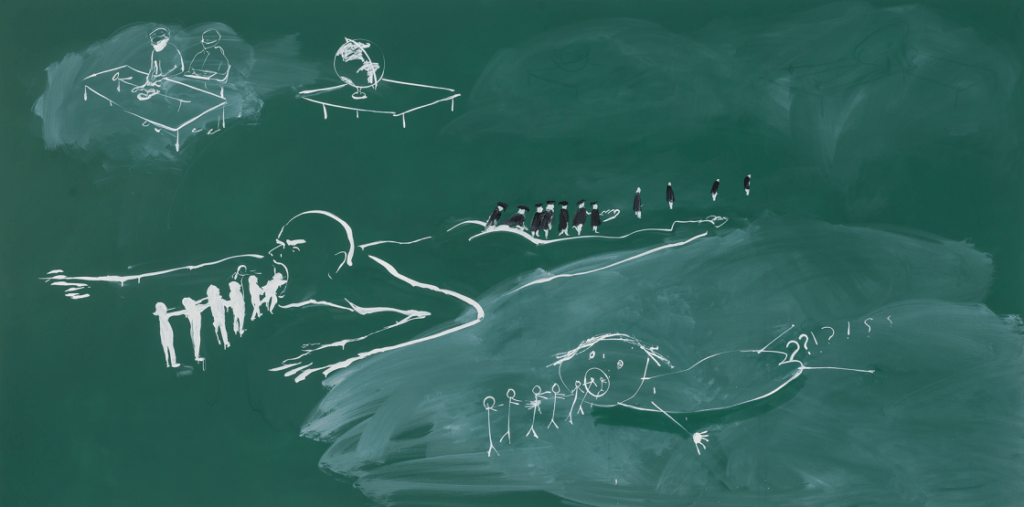
Blackboard (Further Education), 2021, Oil on linen, 152.4 × 304.8 cm. Courtesy YDC.
Madani’s works frequently feature balding, paunchy middle-aged men. Their childish behavior, and the unkind treatment they suffer, appear to suggest a crisis in male-dominated society. Her “Shit Mother” series (2019-), meanwhile, shows infants playing with a mother who has turned into excrement: a deliberate desecration of iconic image of mother and child.
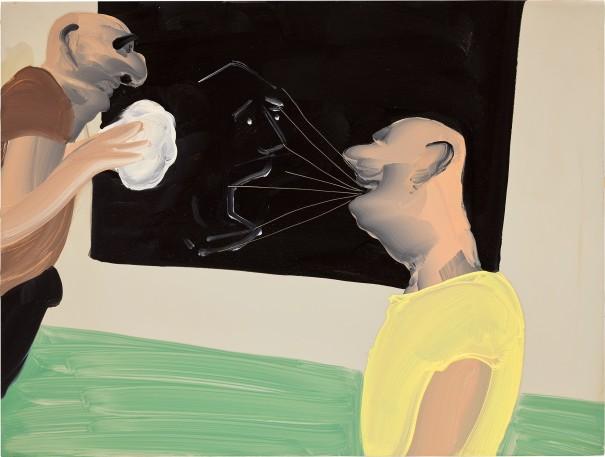
Face Scrub, oil on panel, 29.2 x 40 cm, 2008.
Many of Madani’s other images, including a grid representing modernism, violence generated by power structures and mob mentalities, and the bestial instincts of humans, can also be viewed as keenly ironic comments on the Western-centric society.
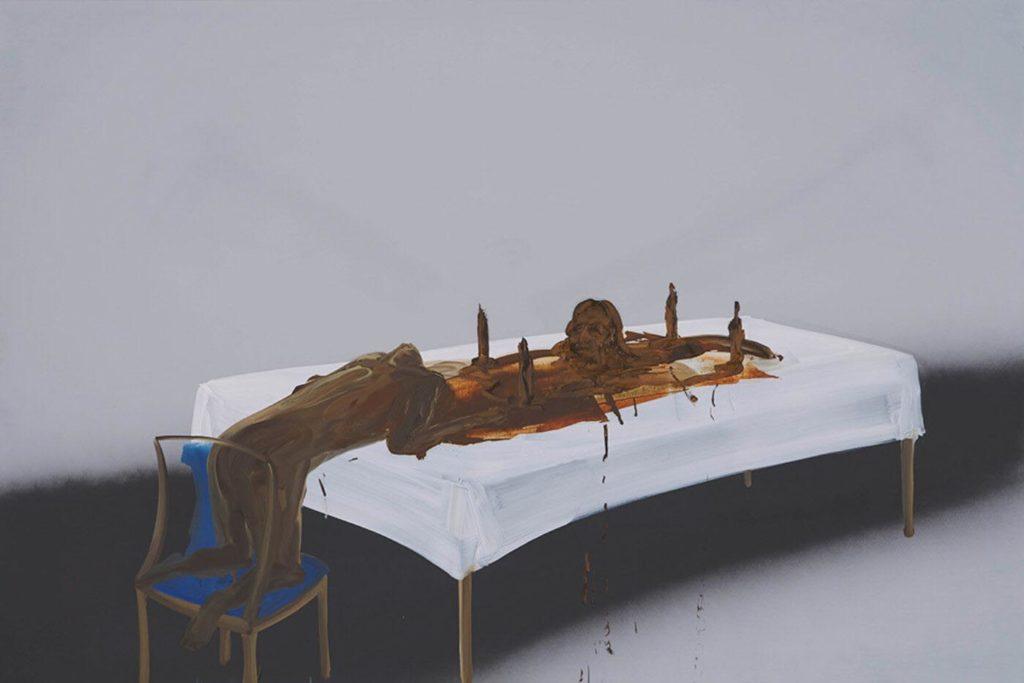
Shit Mom (Feedback), 2021, oil on linen, 183 × 274 cm. Courtesy of the artist and Pilar Corrias, London
These works which shine a light on a primitive human essence that transgresses rational norms, plunging a well-honed scalpel into our moral views, will doubtless inspire fresh contemplation of the tolerance toward others espoused by multiculturalism.
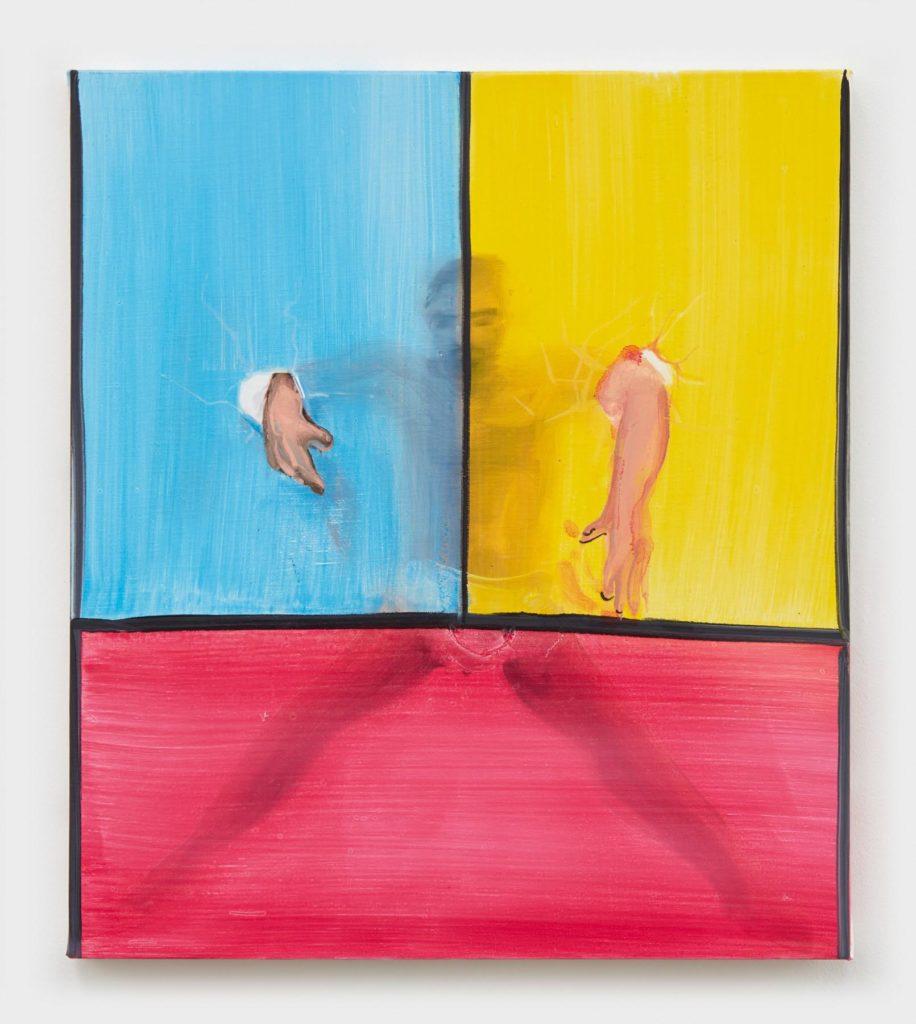
Through modernism, 2017 oil on linen, 40.6 x 36.2 x 2.5 cm
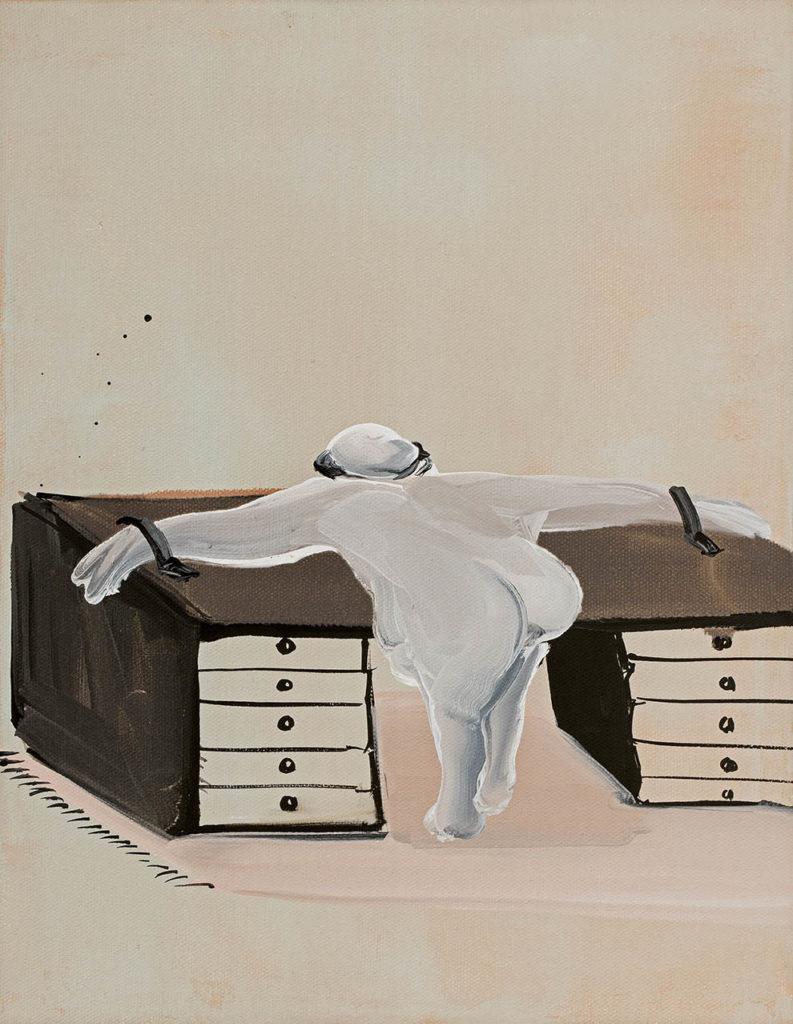
UNTITLED, oil on canvas, 35.5 x 27.6 cm, 2013
Tala Madani (b. 1981, Tehran, Iran) makes paintings and animations whose indelible images bring together wide-ranging modes of critique, prompting reflection on gender, political authority, and questions of who and what gets represented in art. Her work is populated by mostly naked, bald, middle-aged men engaged in acts that push their bodies to their limits.
Bodily fluids and beams of light emerge from their orifices, generating metaphors for the tactile expressivity of paint. In Madani’s work, slapstick humor is inseparable from violence and creation is synonymous with destruction, reflecting a complex and gut-level vision of contemporary power imbalances of all kinds. Her approach to figuration combines the radical morphology of a modernist with a contemporary sense of sequencing, movement, and speed. Thus, her work finds some of its most powerful echoes in cartoons, cinema, and other popular durational forms.Tala Madani (b. 1981, Tehran, Iran) makes paintings and animations whose indelible images bring together wide-ranging modes of critique, prompting reflection on gender, political authority, and questions of who and what gets represented in art. Her work is populated by mostly naked, bald, middle-aged men engaged in acts that push their bodies to their limits. Bodily fluids and beams of light emerge from their orifices, generating metaphors for the tactile expressivity of paint. In Madani’s work, slapstick humor is inseparable from violence and creation is synonymous with destruction, reflecting a complex and gut-level vision of contemporary power imbalances of all kinds. Her approach to figuration combines the radical morphology of a modernist with a contemporary sense of sequencing, movement, and speed. Thus, her work finds some of its most powerful echoes in cartoons, cinema, and other popular durational forms.
